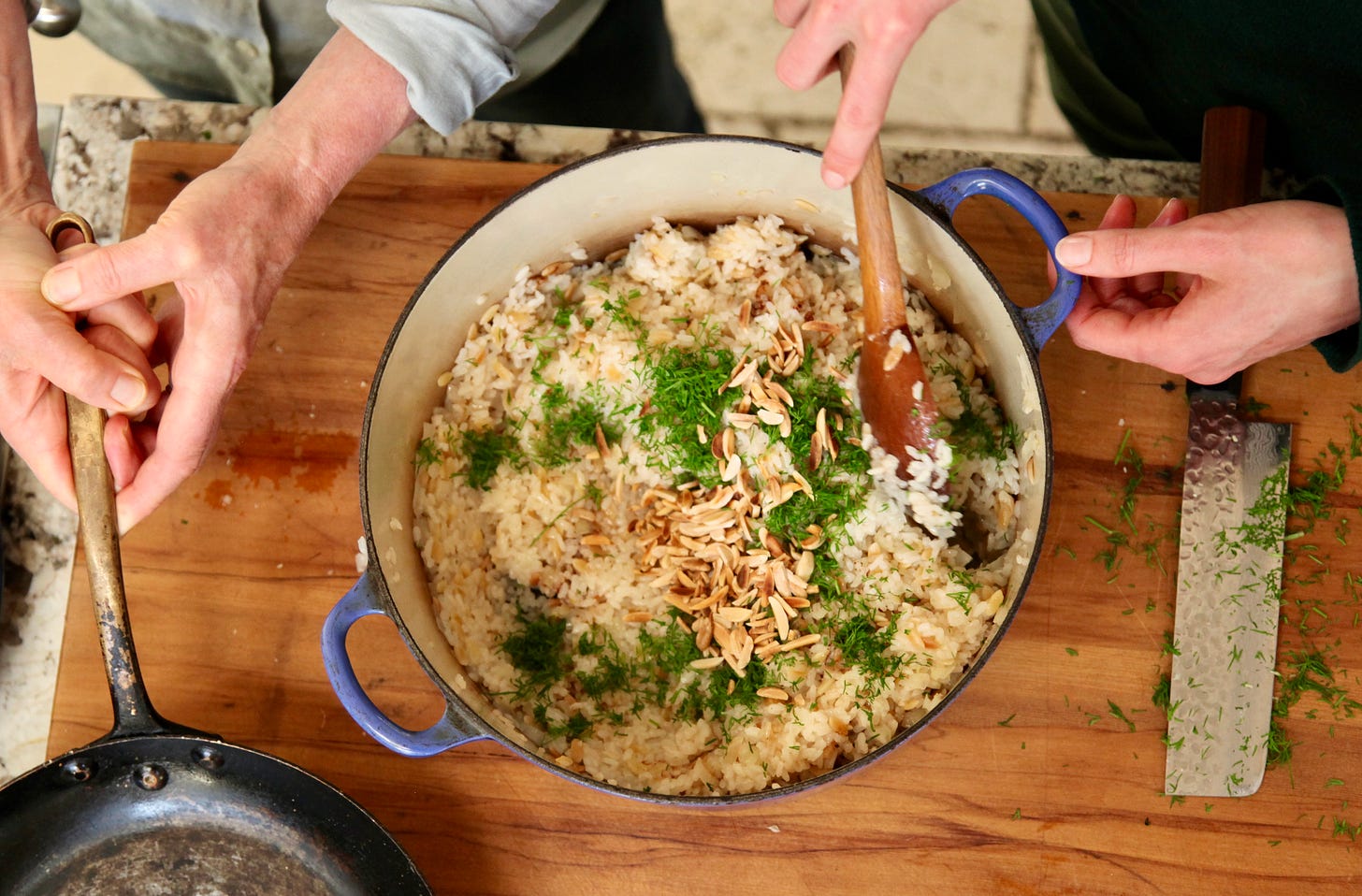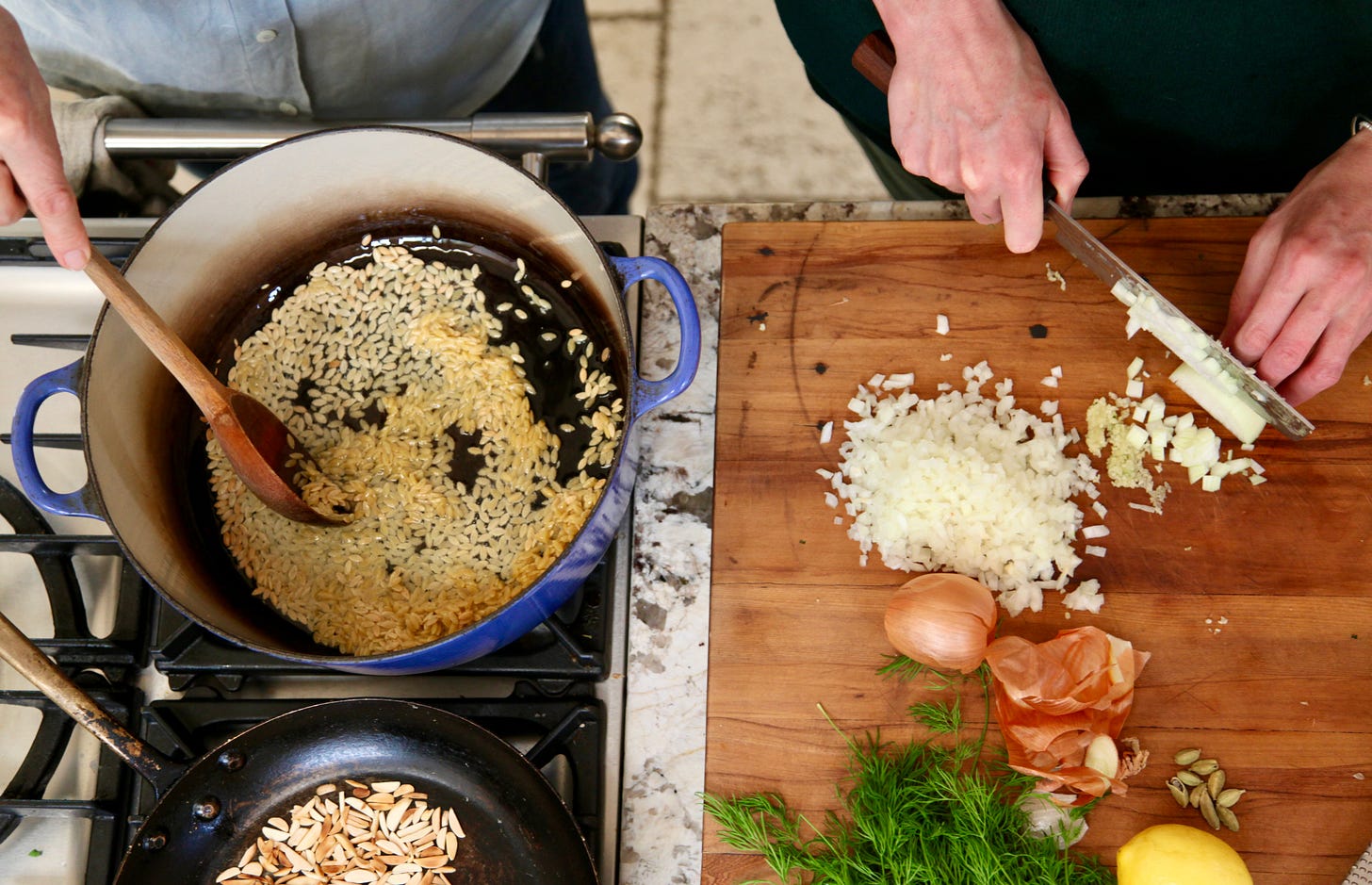What to Cook Tonight #14
A warming and comforting Turkish Pilaf that tastes like a hug, a Big Green Garlicky Pasta, and a hearty Sicilian Cauliflower Salad. Plus, a very special bonus recipe for Basque Burnt Cheesecake...
There is something about the combination of rice and stock that really hits the spot. For both of us, rice is our desert island carb — we could eat rice for breakfast, lunch, and dinner. Whether it is plain white steamed rice when we are feeling under the weather and in need of some simple nourishment, an eggy fried rice filled with odds and ends of vegetables, a beautiful pilaf or biryani, tender toothsome risotto, or a rice paella or arroz de marisco as you find in Portugal, there is possibly nothing more versatile and with so many different cultural connections as rice.
Knowing which rice to use for which dish is key to successful rice cooking. When you want a creamy texture that holds it shape you need a variety like arborio, carnaroli, or vialone nano or, if you can find it, Portuguese carolino rice. Both basmati rice and jasmine rice are fragrant long-grain varieties, but jasmine has a soft, sticky texture when cooked. For pilaf and biriyani you need to use basmati rice.
If you aren’t very confident about cooking rice the thing to understand is that rice — like pasta — absorbs liquid as it cooks. If you have too much liquid and cook it for too long it will be mushy. When we cook plain rice on the stovetop we always work to a ratio of 1 cup rice to 1½ cups water. If you add more water the rice will be stodgy and overcooked.
With this in mind, the first recipe we are sharing this week is for a Turkish Pilaf. So many cultures have their own way of making pilaf — in Iran, the rice is often flavoured with rosewater, pistachios, and saffron. An Indian pilau will typically use turmeric, cardamom, and curry leaves to flavour the rice. Our version is similar to that found in Turkey — cardamom, cinnamon, and cloves gently infuse the rice with warming spices, which is then topped off with some toasted pine nuts and dill for added deliciousness. Almonds and parsley also work well here in place of pine nuts and dill if you prefer. We love serving this comforting dish just as-is, with a dollop of thick Greek yoghurt, or with some juicy baked chicken or lamb.
Now that you’ve got your spices, you might like to make Swedish Cardamom Buns —perfect for a rainy day activity, especially with the kids. Be sure to watch this video for help on shaping them too. This Chocolate & Cardamom Tart is also delicious if you’re yet to try it. Cinnamon is excellent in our Honey & Olive Oil Muesli which Rose likes to make in bulk for quick mid-week breakfasts. We’re also sharing a divine recipe for a Basque Burnt Cheesecake, which you’ll find at the bottom of this post. In case you’re wondering, Basque Burnt Cheesecake isn’t actually burnt, it’s more that the edges and top are wonderfully caramelised which gives the cheesecake a much more layered and luscious flavour.
Keep reading with a 7-day free trial
Subscribe to The Langbein Newsletter to keep reading this post and get 7 days of free access to the full post archives.





